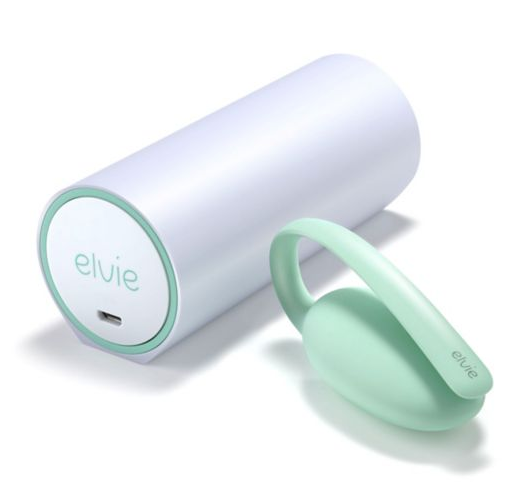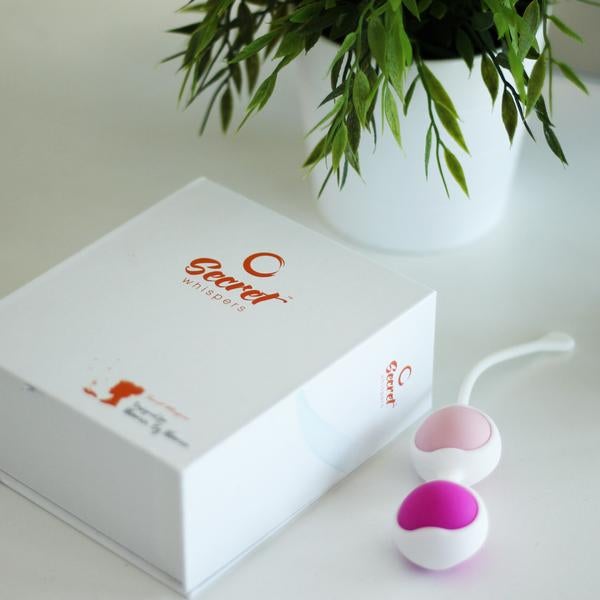When was the last time you exercised your pelvic floor? And no, it doesn’t count if you gave it a quick squeeze as you read that last sentence. Experts recommend doing pelvic floor exercises three times a day for life but if you’re feeling absolutely clueless, don’t panic – you’re definitely not alone.
The pelvic floor is a muscle that everyone has, regardless of gender, supporting the bladder, bowel and either the uterus or prostate. A strong pelvic floor helps prevent urinary and faecal incontinence – so it’s really key – but research by the Continence Foundation of Australia found that 98% of women don’t do the recommended three pelvic floor exercises (or Kegels) a day. Of the tiny minority who do, half of them are doing it wrong. Two weeks ago, I was horrified to discover I was one of them.
AdvertisementADVERTISEMENT
As a women’s health journalist, I’ve always considered myself pretty well informed. I know what my pelvic floor is, what it does and why it’s important to exercise it. I’ve also never been through pregnancy, childbirth or the menopause – the three life events most commonly associated with pelvic floor issues – and for years I’ve tried (albeit sporadically) to do my Kegels on a semi-regular basis.
So when femtech brand Elvie sent me their pelvic floor trainer to try, I was confident my pelvic floor was in good shape. I connected the little Bluetooth vagina egg to the app on my phone, popped it in and proceeded to squeeze exactly as I’ve always done. But instead of acing my first pelvic floor workout, the app flashed up to tell me I was doing it wrong: "Try lifting upwards instead of pushing down. Pushing down can cause problems over the long term."
With a bit of googling, trial and error, I eventually got the knack and progressed through the rest of the workout. I then spent the next two weeks grilling unsuspecting friends, relatives and strangers on the internet about their pelvic floor function, knowledge and exercise habits. If I’d been doing my Kegels wrong for all these years, and didn’t know as much as I thought I did, how many more women my age were in the same boat?
It’s no secret that our collective body literacy and body education is appalling. In 2016, research by gynaecological cancer charity The Eve Appeal found that roughly half of women don’t know the difference between their vagina (internal genitalia) and their vulva (external parts like the labia). But if we’re woefully uninformed about our sexual and reproductive organs, there’s a whole extra layer of ignorance and stigma shrouding our pelvic floors.
AdvertisementADVERTISEMENT
For most of the women I spoke to – mums and non-mums – pelvic floor knowledge ranged from nonexistent to patchy at best. Some told me it had been mentioned during pregnancy, while others had heard a little bit from friends or Pilates instructors.
Some, though, had never given their pelvic floor a second thought until it started causing them issues. "I’m 24 (non-mum) and didn’t even know I had a pelvic floor until I was 19 and realised it wasn’t working properly," Sophie, who suffered from vaginismus, tells me on Twitter. "A key part of recovery was learning to control my pelvic floor, but I got most of this info from Tumblr," she adds.
"About a third of the women I see in my clinic, I only see once. They just need a bit of basic education, a bit of reassurance, and then they get better," says Elaine Miller, a pelvic physiotherapist and comedian whose Gusset Grippers show uses comedy to raise awareness about pelvic floor health.
Incontinence, Elaine points out, isn’t just a problem for mums and grans. About 20% of 15-25-year-old women suffer from stress incontinence – the most common type, where you leak pee when laughing, sneezing or exercising. Among active women, she adds, 69% worry about wetting themselves during a workout.
According to Elaine, these problems could be "dramatically reduced" if we were simply taught earlier to do our pelvic floor exercises. "Three quarters of the women I see in clinic could be self-managing. For the majority of women, doing your pelvic floor exercises regularly is both preventative and curative," she explains. "And the side effect of doing your pelvic floor exercises is an improved orgasm – so it shouldn’t be a hard sell!"
AdvertisementADVERTISEMENT
Julie Colan is the creator of Secret Whispers pelvic floor toner – which she describes as "a dumbbell for your pelvic floor" – and recently launched the #DontIgnoreThePelvicFloor campaign. "I’ve been doing my Kegels since I was 14 and I assumed every woman did. I was enraged when I started speaking to mums in the playground and I kept hearing 'What's the pelvic floor?' and 'Surely it's normal to wet yourself after having children?'" she explains.
"In May we had a huge surge in enquiries from women who’d taken up exercise during lockdown but they just hadn’t been educated about looking after their pelvic floors, so they were leaking when they went for a run or did an online HIIT class," Julie says. "The pelvic floor is a muscle like any other muscle in the body, and it needs to be exercised. Don’t wait until you’ve got an issue before you start looking after it."
Given how important this muscle is, it seems strange that awareness is so low. I certainly never learned about it in school and, based on a quick straw poll of teachers and parents of teenagers, not a great deal seems to have changed. Why? Elaine doesn’t pull any punches. "I think it boils down to good old-fashioned misogyny. When it comes to anything to do with women’s genitals, the silence is deafening," she says.
For her, the obvious solution is to get pelvic floor education into schools and teach it as part of sex education, PSHE or even PE. Sadly, at the moment it seems to come down to luck whether you’re told about it or not. "It isn’t on the curriculum but I do bring it up as students generally ask about the female body postpartum," one teacher tells me.
AdvertisementADVERTISEMENT
Meanwhile my friend Hannah, 31, says: "My mum told me to always do my pelvic floor exercises from when I was about 13. My older sister was a really strong advocate too, and it became a sort of game. I remember tensing and releasing for as long as I could when I was bored in a maths class."
But for those of us without a proactive and clued up teacher or mum, the pelvic floor can feel like the final frontier in women’s health and body literacy – and it’s a tricky exercise to figure out on your own. "You want to do 10 slow squeezes, holding each one for 10 seconds, and then 10 fast squeezes at about one per second," explains pelvic physio Myra Robson, co-creator of the award-winning Squeezy app.
The best way of describing the technique, she and Elaine tell me, is to imagine you’re holding in a fart, somewhere you really, really don’t want to let it go. (Myra recommends imagining you’re standing in front of the queen, but find what works for you!)
"It should feel like a squeeze and lifting up of those muscles. It shouldn’t be a big clench, it shouldn’t be the stomach muscles, legs or buttocks working – although you will feel a little bit of a contraction in the stomach – and you shouldn’t be holding your breath, or wrinkling up your eyes and nose," Myra explains.
If you’re a fan of gadgets or new pieces of gym kit, Myra particularly recommends the Neen Pelvic Floor Educator or the Kegel8 – and of course there’s also the Elvie, and Julie’s Secret Whispers kit.
AdvertisementADVERTISEMENT
That said, there’s still no guarantee you’ll never have issues. "There’ll always be people with more complex problems who need to be seen in clinic. Sometimes it’s not a weakness problem, it’s a pelvic floor dysfunction, where the pelvic floor muscles don’t relax," Elaine explains.
"The presentation of that is almost exactly the same [as stress incontinence] but because the muscles don’t relax properly, you also get a lot of pelvic pain," she says. "Pelvic floor exercises won’t work for those people, because you’re just over-exercising an already overworked muscle. If you do your pelvic floor exercises and it doesn’t get better, come to a pelvic physio clinic and we can help with tailored exercises."
For most of us though, a regular Kegel regime just makes sense. "I liken it to looking after your teeth," Myra says. "We all clean our teeth twice a day and go to the dentist regularly from a young age, and we wouldn’t think of doing otherwise. You wouldn’t wait until you’ve got a toothache or a filling before you start looking after your teeth, so why are we doing anything different to the pelvic floor?"



